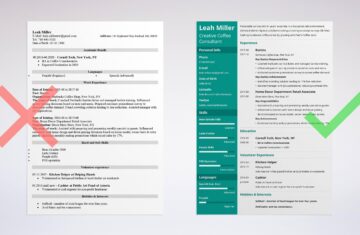The person who records and reads articles and audiobooks is called a “Voice Over” actor, and it is a job that, as you know, requires high skills. It is commonly believed that the first voiceover was created by Walt Disney for Mickey Mouse in “Steamboat Willie“, and although this was in 1928, the first voiceover was actually made in 1900! This first date belongs to Reginald Fessenden, the inventor who set out to create a way to communicate remotely without wires, and here was the beginning of “Wireless!” And, in 1900, while working for the United States Weather Bureau, Fessenden recorded the first sound, which was a weather report.
What is voiceover?
Voiceover is the art of practicing voices. It is about providing a voice for use in professional voice work. This can be a voiceover for games, videos, animations, commercials, and much more. And here you have come to realize that voice acting applies to many genres, as voice-over artists have a number of different titles depending on their area of expertise. Here are some of them:
- Voice over on TV, radio, or in live broadcasts such as award shows, talk shows, promotions, and sports matches.
- Audio commentary on cassettes, documentaries, educational videos, commercial videos, and medical videos.
- Voiceover is used in animated films, television cartoons, radio dramas, video games, puppet shows, and foreign language dubbing.
If you are thinking of starting as an audio commentator, you will have made the right choice, because this field has a wide and varied scope of work, including:
- Dubbed foreign voices on language films.
- Voice acting for animated short films or movies.
- TV shows.
- TV commercials.
- Radio drama.
- Audiobooks.
- Documentaries.
- Training/e-learning.
- Podcasts.
What is the role of the voiceover?
Voiceovers are actors whose role it is to read different articles and blogs in a variety of styles. A professional “Voice Over” artist’s life is interesting because work can be long-term or short-term; a twenty-second commercial voice-over is short work, but a radio series can take months to produce.There is also a difference in the nature of the work of voice actors from one country to another. In the UK, they are recognized as a specialized dramatic profession and are supported by the British Actors’ Union, “EQUITY.” Similarly, in the US, SAG/AFTRA supports American voice actors.
Practical steps to get started with “Voice Over”
When you look at the work of a voiceover artist, you will begin to realize that the focus is on the skills that one needs in order to be successful. Let me tell you that the basic skills of voiceover are pretty much the same across all types of work, but the main skill is reading. That reading must be commensurate with the type of work you have been assigned. The art of “Voice Over” is to list the words naturally and automatically, as they fit the character (such as a cartoon character) or context (such as a documentary), and not appear as if you are reading from a sheet of paper in front of you.
It is also important to know the right equipment for recording audio, and to record a good voice, of course, you need the right equipment. The logging and processing chain consists of a lot more, but let’s get to know some of them:
- Microphone
- PC
- Headphones or speakers

1. Find a good room.
The room you are recording in will have a huge impact on your audio recording. A room that’s too small will have a louder echo. Go into a tight space and clap or speak loudly; you’ll hear what I mean. Conversely, a room that is too big will make you look distant and difficult to understand. Imagine you are sitting in the back of a large lecture hall; of course it will be bad. Finally, the appropriateness of the room must be taken into account, as the softer the furnishings, the better.
A room with lots of hard, reflective surfaces (such as the kitchen or bathroom) looks much worse than a room with lots of soft furnishings (such as the bedroom or living room).
Make a list of all the rooms available for enrollment in, and choose a room with the most comfortable furnishings that is not particularly large (eg, a lecture hall) or small (eg, a bathroom)! When you are recording, you are not only recording your voice, but the microphone will also pick up the room and the way your voice interacts with the environment around you, so beware, my dear.
2. Test your chosen room.
Now that you’ve chosen your room, it’s time for a final check… Go into the room and clap. Do you hear an echo or a lot of it (the sound bouncing around the room)? Now speak loudly in the room. Is your voice clear and reasonable? If this is the case, try placing some soft furnishings (such as mattresses and duvets) in the room to reduce the impact of hard surfaces.
3. Prepare your tools.
Time to start preparing your tools! Put on your mic stand, plug in your mic, and if you have a USB mic, plug it into your computer. Now open an audio recording software of your choice, create a new track, and start recording…
After recording some minutes, Listen to the recording—is there clear background noise? Fans, air conditioners, electrical appliances, street traffic If it’s not okay, you have to close everything—all windows and doors.
4. Find the correct microphone position.
This is a crucial step that some people skip; don’t be like them, my dear! To get a good sound, you need to experiment with the position of the microphone and the distance from your mouth. Press record and start speaking with your mouth 5 inches away from the microphone. Listen again to how it sounds, then try to get closer to the microphone, then try to move further away.
Listen for how it affects your tone of voice and find your preferred location from the mic. Don’t give up too soon; it’s perfectly normal to record the same clip over and over, and if you’re worried about this, 5′ will suffice in most cases.
5. Prepare mentally for the performance.
There’s no point in a high-quality recording if your voice is boring! Before you go for your first recording, mentally prepare for the voice session if you are doing the voice of a fictional character. Remember that you are first and foremost an actor.
6. Prepare for the session.
You need to make sure that nothing goes wrong while you are recording, I guess there is nothing worse than someone walking into your room while you are recording.
Let everyone know you are recording, turn off any electrical devices that make noise, and best of all, put a sign on the door. Have tools ready and make sure they are all there.
Now press register and get to work! Don’t worry if you mess it up, sometimes you get it right the first time; Other times you need to sign up more often.

7. Listen and take notes.
Once you’ve finished your recording, take a 10-15 minute break to relax; now it’s time to listen… Play the recording and take notes on how you sound.
Is it clear or noisy? Does it look automatic or not? Write it all down, and then I start editing. That is it; congratulations! You’re all done; you’ve recorded a great sound.
Read also: How to improve work environment for better productivity



